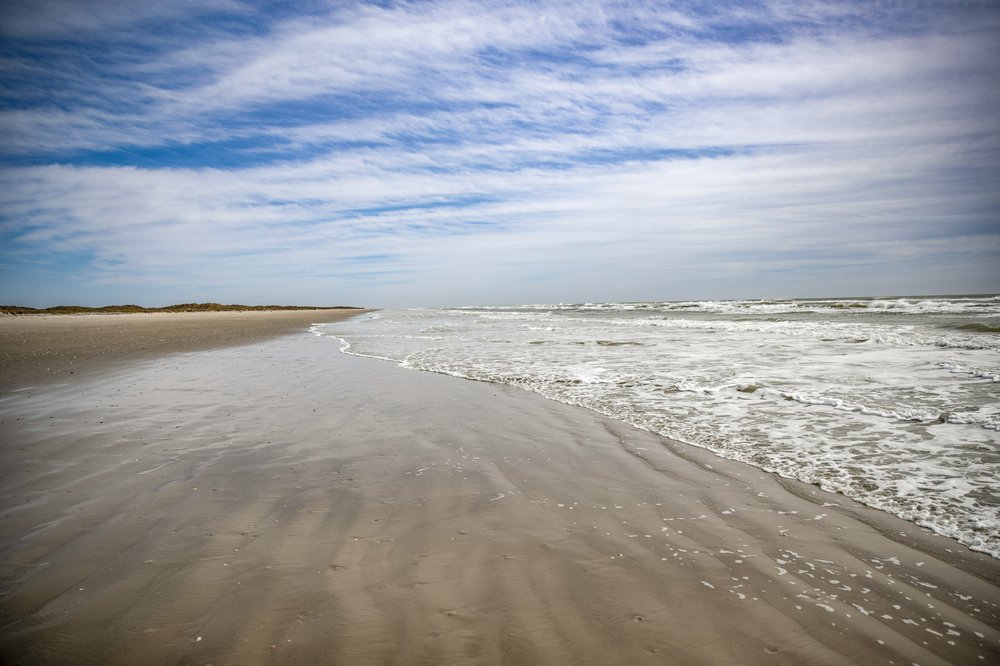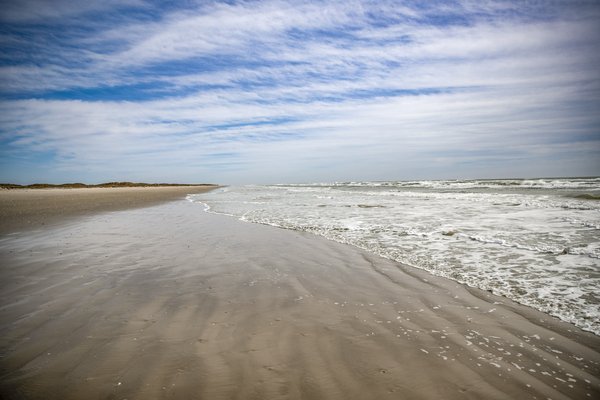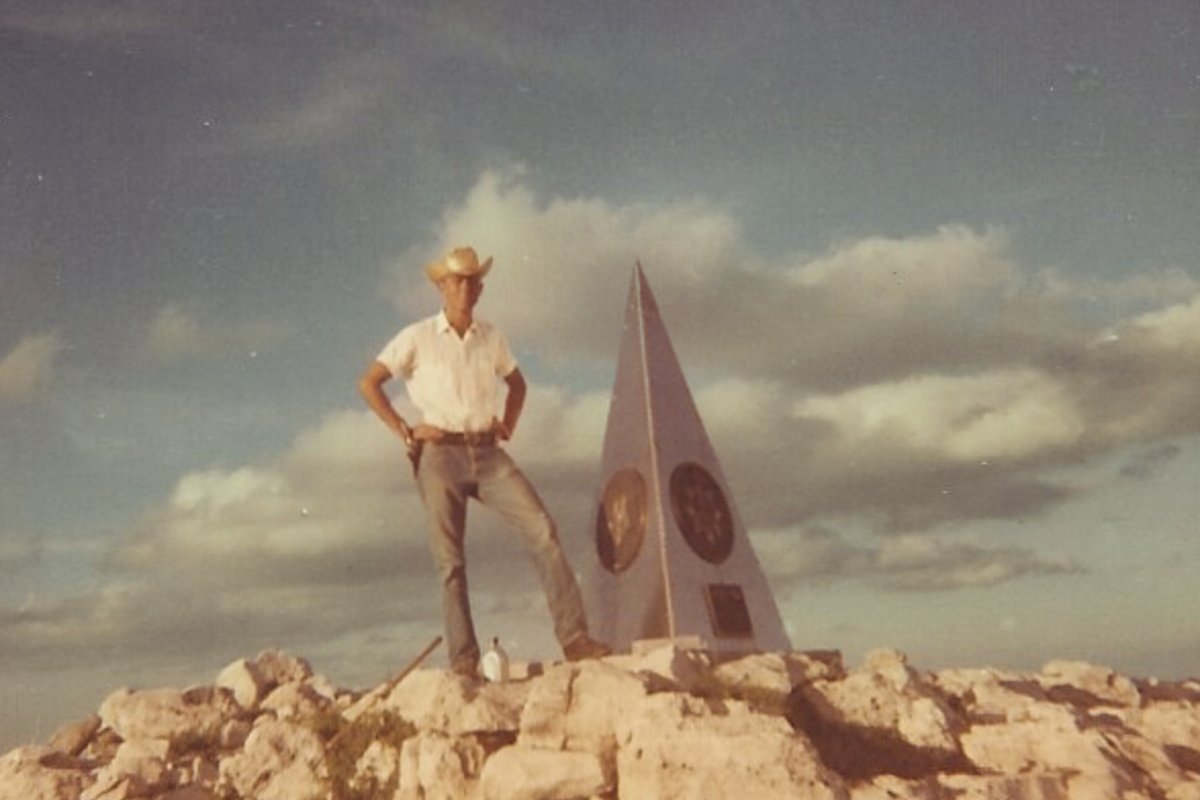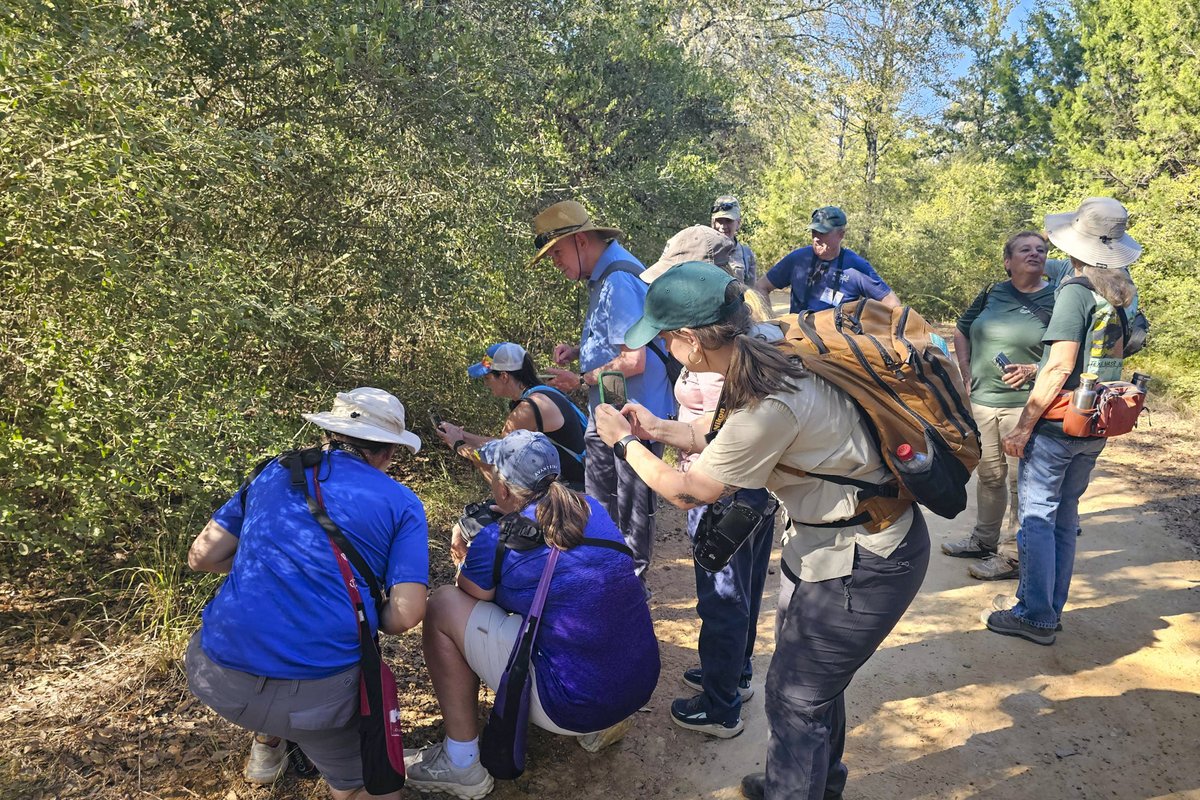Matagorda Island was a home for Native Americans, a stopover for European settlers, a Civil War battlefield, a bombing range and a state park. Now, after centuries of war and commerce, the island has entered a period of peace as a wildlife management area.
The island, which lies 11 water miles from the nearest town of Port O'Connor, is not easy to get to, and it's about as remote as you can get in Texas. It's a prime destination for those who want to escape the busy world for a while.
“You can be on that beach and you're the only person on that beach for 36 miles,” says Dan Walker, Coastal Bend Wetlands Ecosystem Project leader. “That's hard to say anywhere else in the U.S.”
Those Who Came Before
Matagorda Island was formed around 5,000 years ago. And while that's relatively short in terms of geologic time, the island has seen a huge swath of human history. A few hundred years ago, it was the homeland of the Karankawa people, a nomadic group who migrated seasonally between the barrier island and the mainland depending on the availability of food.
The island saw some of the first European explorers to the area, including Álvar Núñez Cabeza de Vaca and Robert de la Salle. Settlers eventually founded a small town on Matagorda Island called Saluria. In 1863, as the Civil War ravaged the country, the island was the fighting grounds for the Battle of Fort Esperanza. You can still see the trenches the soldiers used, zig-zagging across the marshy land.
By the mid-1900s, as the fort's walls eroded away, most of the island was owned by a few ranching families who ran cattle on its grassy flats. For a few years, the island seemed peaceful — but that peace wouldn't last.
During World War II, the U.S. government was looking for places to train soldiers and test weapons and reappropriated Matagorda Island as an Air Force base and a bombing and gunnery range. It operated throughout the duration of the war and finally closed in 1975.
A few years later, in 1983, a state park opened on the island, and a ferry called the Easy Rider II shuttled people from the mainland. Visitors from all over the state and beyond enjoyed the historical and natural charms of the island, heading out for day trips and camping expeditions.
Unfortunately, that heyday couldn't last either. The ferry burned, and due to logistical complications, it was not replaced. And so began Matagorda Island's current period of peaceful solitude. The land, still owned by the federal government, was transitioned to a wildlife refuge, and Matagorda Island is finally getting a chance to rest.
A Remote Destination
Although it is no longer a bustling state park, Matagorda Island still gets visitors each year. Many come for fishing, or for one of several drawn hunts that WMA technician Patrick “Pickle” Ragusin oversees. “We also get history buffs, bikers, hikers, beachers,” Ragusin says.
Many come just for the pure solitude the island offers. “I like to say, ‘Matagorda Island is not the end of the world, but you can see it from here,'” Ragusin says.
There's a good chance you'll have the 56,688-acre island all to yourself. Just make sure to pack in everything you need — water, food, bug spray, sunscreen, camping supplies, etc. — and be ready to pack it all back out when you leave.
Ragusin advises visitors to be prepared for wildlife encounters. “You may come across a snake, a hog, coyote, deer, alligator,” says Ragusin. “Nothing is out to eat you. They might defend themselves, but if you respect them, they respect you.”
The next time you're hoping to escape the human world for a while, consider heading out to Matagorda Island. “It's remote, but that's the mystique of it, right?” says Ragusin. “Those that get it, get it.”
Getting There
Matagorda Island is accessible only by boat (or kayak). If you own a motorboat, you can follow the well-marked water route across the bay. If not, you can hire a boat to take you out there by visiting the Port O'Connor Chamber of Commerce website at portoconnorchamber.com/matagorda-island-shuttles.
If you're up for an adventure, you can also paddle out to the island via a network of paddling trails that begin in Port O'Connor and wind through a network of marshes and bayous for around 10 miles.
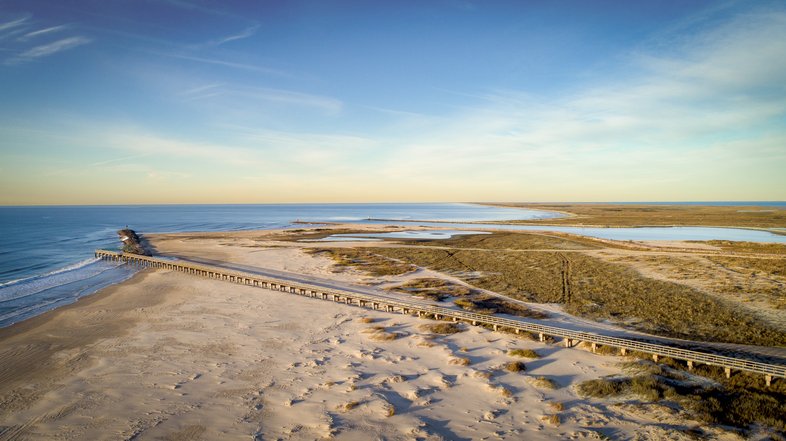
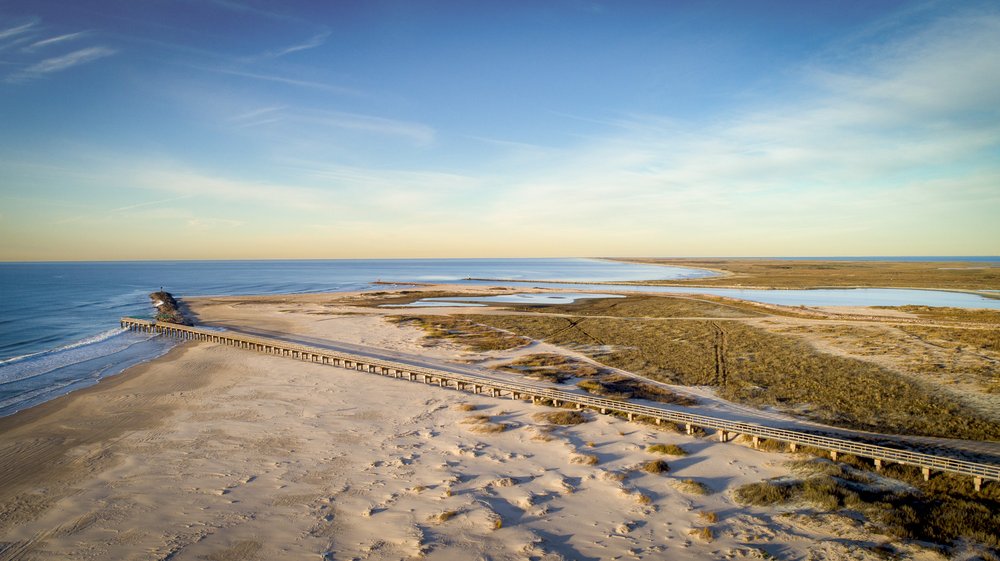
The WMA is home to 39 miles of beaches.
The WMA is home to 39 miles of beaches.
What to Do
Walk the Beach
The island's 39 miles of Gulf beachfront are a wonderful place to search for seashells (the beaches are managed by the General Land Office, so unlike most state parks and WMAs, you're allowed to take what you find). Keep an eye out for sand dollars, sundial shells and light-as-air pieces of pumice.
Bird-watch
Aplomado falcons, whooping cranes and dozens of species of seabirds, shorebirds and migratory birds can be spotted on the island.
Collect Flotsam, Jetsam and More
The beach is a treasure trove of human artifacts that wash up from all over the world. The wreckage of boats sits alongside messages in bottles, plastic items marked with various languages, single shoes and a multitude of other objects. The items that litter the beach provide an interesting study of the permanence of the objects in our lives.
Fish
Enjoy shallow-water wade fishing on the bay side of the island, or surf fishing on the Gulf side. Predominant species include redfish, seatrout, pompano, Spanish mackerel and tarpon.
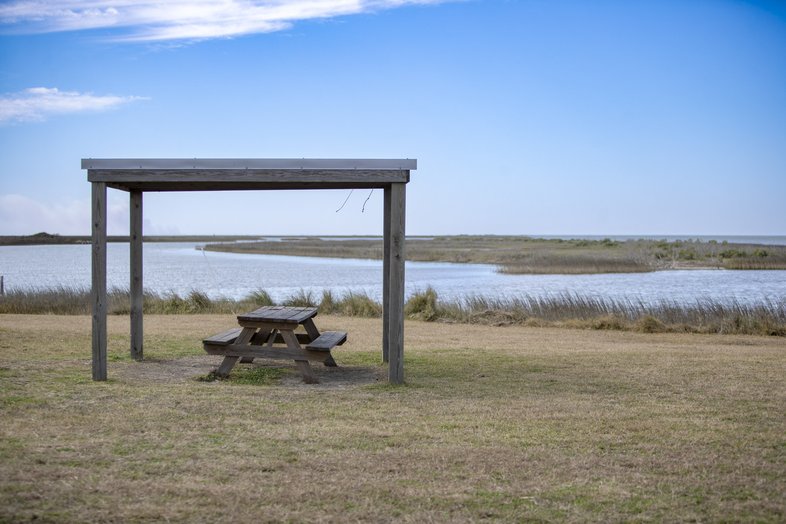
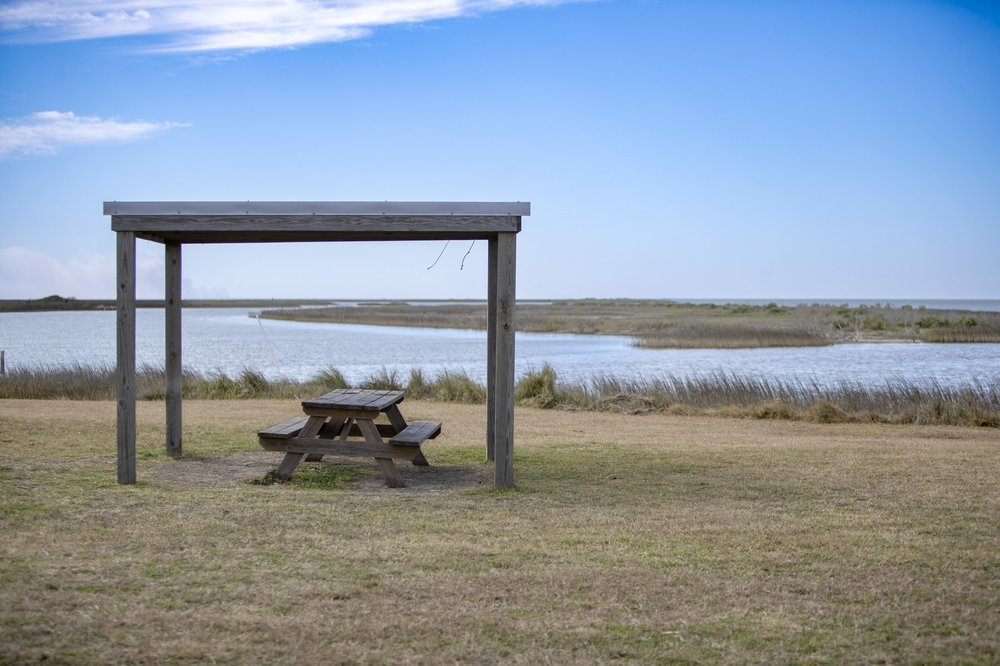
One of the WMA's 13 campsites.
One of the WMA's 13 campsites.
Camp
A primitive bayside campground is a perfect homebase for a weekend or longer spent on the island. Thirteen sites are available on a first-come, first-served basis. While they do not have bathrooms or running water, the campsites do offer some shade, barbecue pits and fire rings.
Hike or Bike
No motor vehicles are allowed on the island, so hiking or biking will be your main forms of transportation here. Like other WMAs, you're free to roam around the island as you please. Ragusin maintains a few trails, so you can walk easily to the lighthouse and the beach.
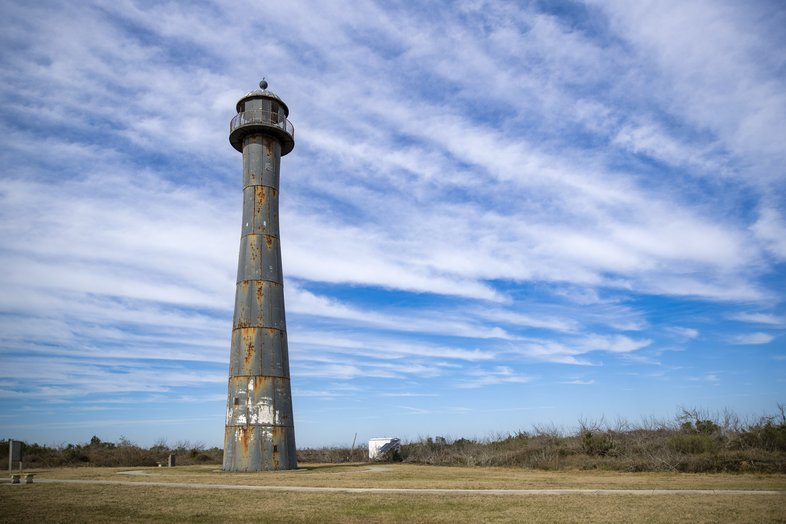
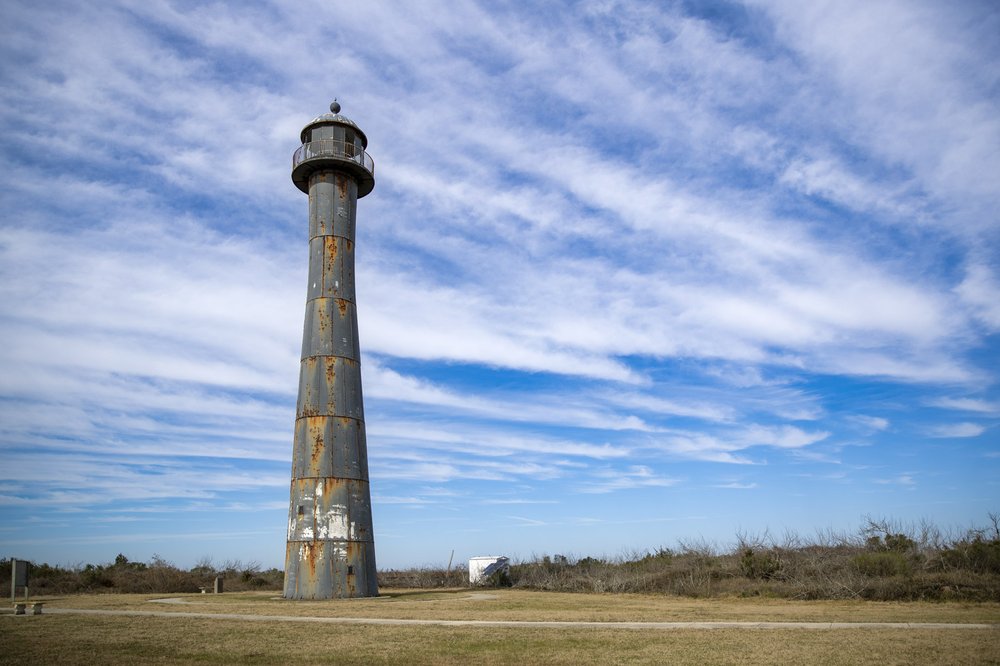
Look out for this lighthouse while you explore the WMA.
Look out for this lighthouse while you explore the WMA.
Visit the Lighthouse and Historic Cemeteries
On the north end of the island overlooking the Gulf stands an 1852 metal lighthouse. Built to guide ships through Pass Cavallo on their way to Indianola, the lighthouse is a relic of another time. The island also has three historic cemeteries.
Hunt
The WMA offers drawn hunts for deer, which are plentiful on the island. Waterfowl hunting is allowed in the Bayside Marsh Unit of the WMA (although hunters are cautioned to be on the lookout for whooping cranes). There are no cold storage units on the island, so be prepared with a plan to transport your harvest back to the mainland.
